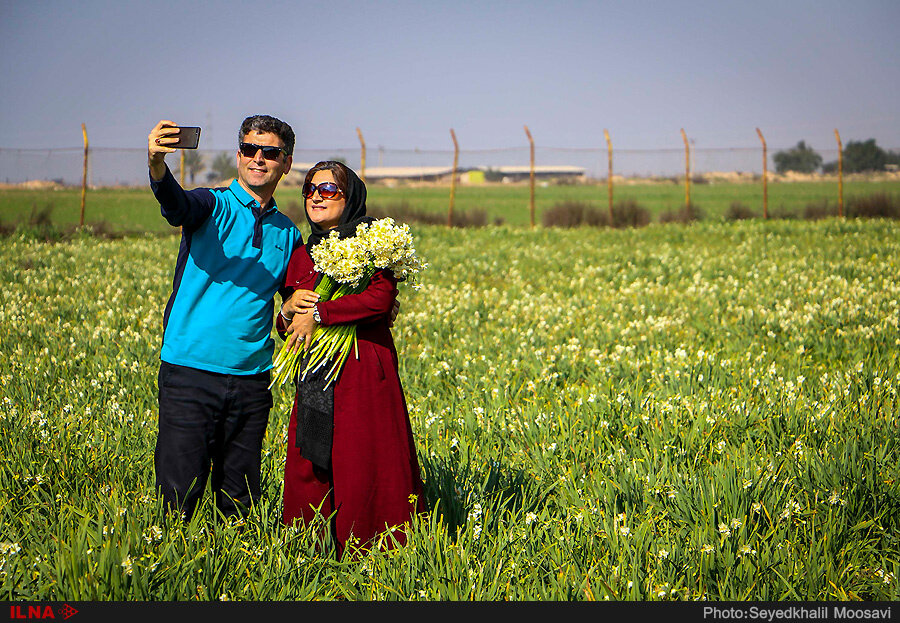Behbahan blossoms: daffodil season opens doors to nature’s splendor and cultural charm

TEHRAN - Behbahan in the southwest Khuzestan province stands as one of Iran’s most renowned hubs for daffodils.
These beautiful flowers hold not only aesthetic value but also medicinal and industrial significance. The harvest season in Behbahan typically commences in mid-December and continues until late February.
In essence, the daffodil harvest season in Behbahan transcends mere agricultural activity. It is a fusion of nature, culture, and industry, inviting travelers to immerse themselves in the splendor of this floral abundance while experiencing the rich tapestry of the region’s heritage and traditions.
The particular strain of daffodils cultivated in Behbahan is known as “Narges-e Arjan”. Historical texts even mention the expanse of Behbahan’s daffodil gardens to have spanned between 700 to 800 hectares in centuries past, CHTN reported.
The allure of these flowers lies not just in their beauty and diversity but also in the special customs and arrangements surrounding them. These aspects have turned into a natural tourism attraction for the region and the broader province of Khuzestan, capable of drawing in diverse tourists from various parts of Iran and the world.
Local customs related to the cultivation and celebration of the daffodils during the harvest season have become an integral part of the region’s cultural identity. Visitors are treated to an immersive experience, witnessing the delicate process of harvesting these blooms, understanding their significance in traditional medicine, and partaking in cultural festivities unique to the area.
Authorities and locals alike are keen on preserving this natural heritage, ensuring sustainable practices in daffodil cultivation and tourism management. According to available data, efforts are underway to enhance facilities for visitors, including guided tours, accommodations, and cultural events centered around this seasonal marvel.
Daffodils hold profound symbolism in Persian culture and literature, often emblematic of the beloved’s eye. The poetry in Persian tradition frequently likens the beloved to the daffodil, drawing parallels with its leafless, green stem—a symbol of humility and dignity, characterized by its hollow, straw-like, and curved structure.
Lying at the head of the Persian Gulf and bordering Iraq on the west side, Khuzestan was settled about 6000 BC by a people with affinities to the Sumerians, who came from the Zagros Mountains region. Urban centers appeared there contemporaneously with the first cities in Mesopotamia in the 4th millennium.
Khuzestan, according to Encyclopedia Britannica, came to constitute the heart of the Elamite kingdom, with Susa as its capital. Alexander the Great took Susa shortly after the Battle of Gaugamela in 331, and from 311 to 148, Khuzestan was a satrapy (named Susiana) of the Seleucid empire, with its capital at Seleucia on the Eulaeus River.
The region was passed firmly into Parthian control between 148 and 113 BC and then under Sasanian rule about 226 CE. Moreover, it was a frontier zone between the Roman-Byzantine and the Parthian-Sasanian empires and finally was taken by the Arabs in about 642. The Khuzestan region was part of the Safavid and Qajar dynasties that successively ruled Iran.
In the 20th century, Khuzestan’s prosperity revived with the development of oil fields, the building of the Trans-Iranian railway, and the expansion of ports at Abadan and Khorramshahr.
AFM
Leave a Comment